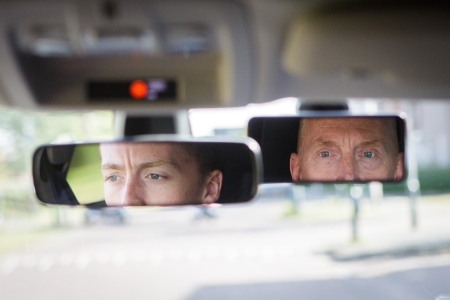When drivers are better able to perceive and predict potential hazards, this will lead to fewer crashes [3]. Thus, performance during a hazard perception test is a good predictor of crash risk for novice drivers. In the state of Queensland (Australia), candidates for graduated driving licence acquisition need to take a separate hazard perception test. Passing the test means the candidate is allowed to drive without any restrictions. Failing the test means one more year of driving with restrictions (no peers present in the car, no driving in the dark). In spite of these restrictions, crash risk during that extra year is 25% higher for candidates having failed the hazard perception test than for those having passed this test [17].
Hazard perception may be described as the timely detection and recognition of traffic conditons that may be dangerous. Hazard perception also means that drivers are able to predict how a traffic situation may evolve, are able to assess whether this may lead to danger, and will take action to ensure that this danger will not result in a crash [20]. Hazard perception can be trained [21], often by means of interactive training sessions on a laptop or tablet. Recently, hazard perception training courses have been developed which use virtual reality glasses [22]. A driving simulator may also be used for hazard perception training [23].
It has been shown that hazard perception training permanently improves observation behaviour [21].Examples of this kind of training courses are the Queensland Transport Hazard Perception Test (QT-HPT), different variants of Risk Awareness and Perception Training (RAPT) and Act and Anticipate Hazard Perception Training (AAHPT). RAPT has been tested most extensively. A recent large-scale randomized controlled trial (RCT) in the United States has shown that, after RATP, in the first year of independent driving, the crash risk for young men significantly decreased, unlike the crash risk for young women [24]. The lack of a significant effect for young women may be caused by their already lower crash risk figures after licence acquisition compared to those for young men. Thus, RAPT may have contributed to their crash risk to a lesser extent.
